By Dan Weisz
Here are some local raptors for your enjoyment, most of whom are very common in the Foothills area.
The Western Screech Owl pair returned to my backyard nest box several weeks ago and began “pair-bonding” activities. The male spends his days in the porch pillar of my next-door neighbor. Often I can see him out in the fresh air, but when he notices me, he drops down instantly into the safety of the cinderblock.
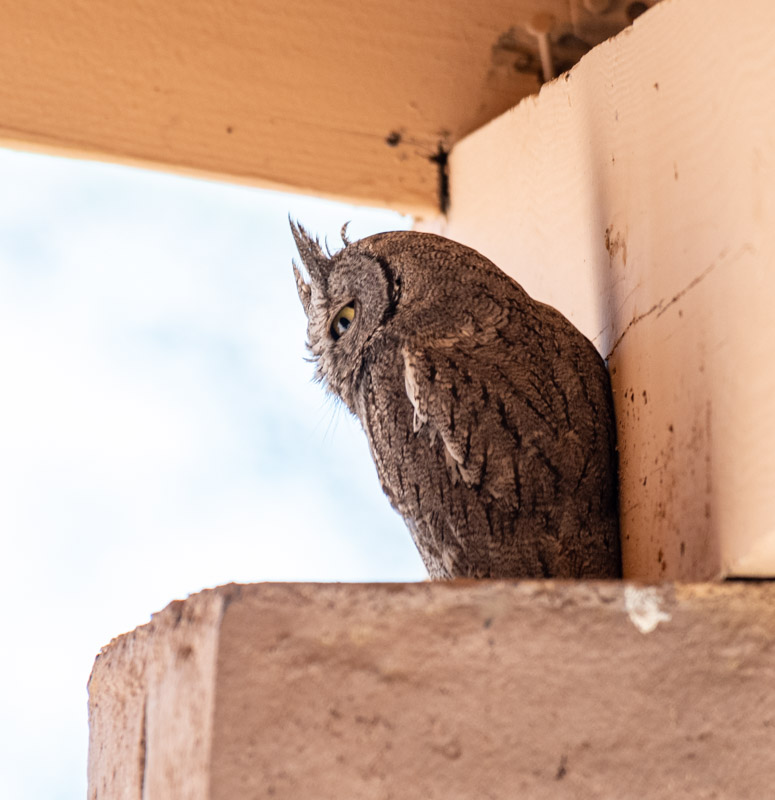
One night I was able to see him delivering a tasty caterpillar to his mate. By this time, she was not leaving the box after sunset making me think she was getting ready to lay eggs. In a funny coincidence, this caterpillar is part of the “Owlet Moth” Caterpillar family. Yes, Owlet Moth.
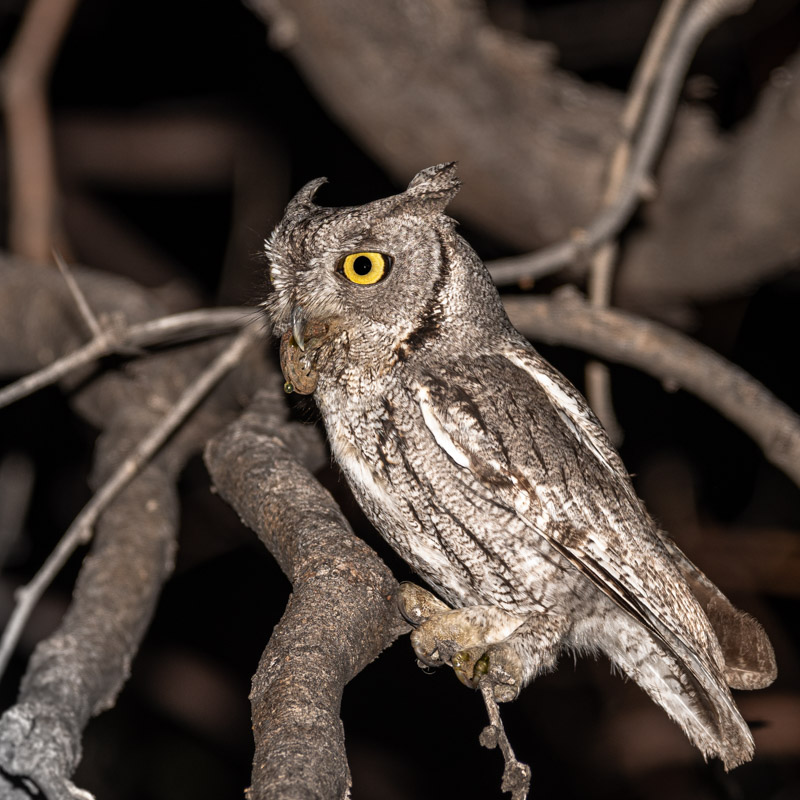
Sadly, this Monday afternoon I looked out at the nest box in hopes of seeing the female’s face in the opening. What I saw shocked me. She was hanging limply from the nest box opening. Apparently she had died for some reason overnight and, with her talons stuck in the wood, hung from the opening. I removed her body and checked the box to see if any eggs were there but there were none. For the past two nights, the male owl has been calling repeatedly during the night. I think this season is lost for him but I hope he will find another mate and bring her “home” to my next box in the spring of ’21. Sometimes Nature is beautiful to witness and sometimes it is not.
I saw the Harris’s Hawk below at a nearby nursery. Although its head is hidden in this photo, I wanted to share the shot anyway. I think it is interesting to see the split second after its jump off of the tree snag when the Harris’s Hawk’s wing and tail are spread out. The hawk was looking over its shoulder and flying away towards another hawk. I believe this is one of last year’s young. Looking at its tail, you can still see one striped juvenile tail feather ‘at the top’ while all of the other adult tail feathers have already grown in
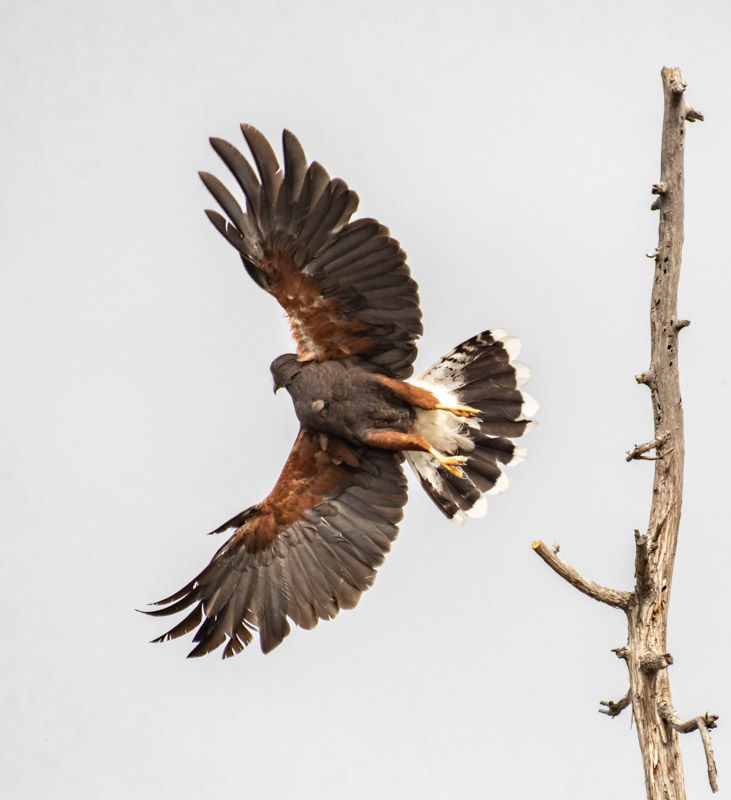
Last week I went to Tubac for the annual Hawk Watch, during March when many hawks migrate north through Arizona via the Santa Cruz River. The target bird for everyone is the Black Hawk, which returns from Mexico to the United States through this one avian corridor. I did see some Black Hawks but was not able to take any decent photos worth sharing. Other raptors also migrate up this lane including Turkey Vultures. My camera settings didn’t allow me to get a detailed picture of the vulture but I do like the dark silhouette and the spread ‘finger’ feathers on it.
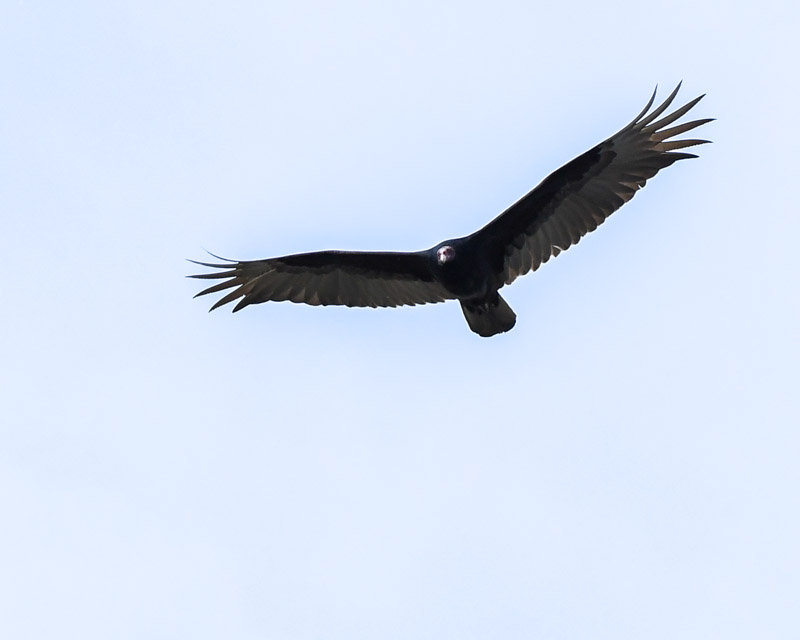
The wingspan of a Turkey Vulture is 5-6 feet. And by the way, these are not buzzards. Buzzards are an Old World bird and do not exist in America. We have Turkey Vultures in North America, and no buzzards.
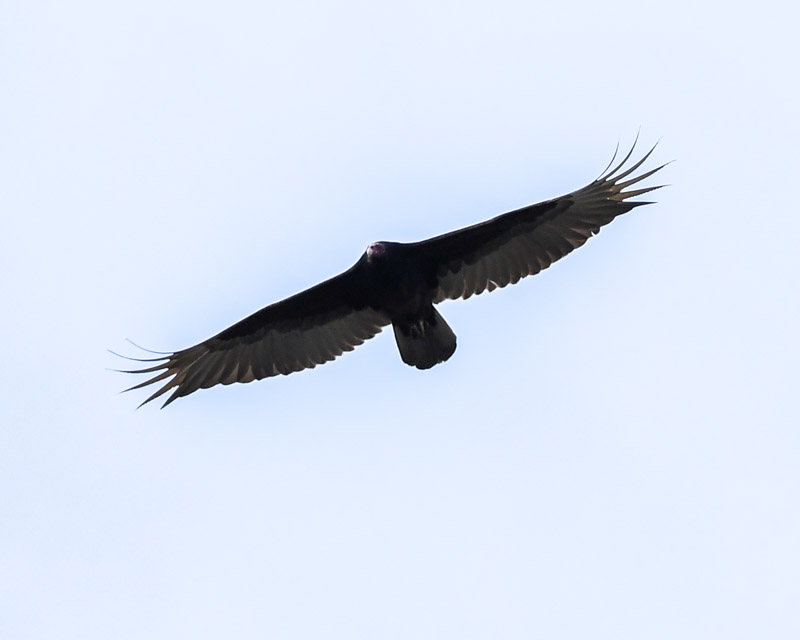
In Tubac I also saw a Cooper’s Hawk in a courtship display flight. During these springtime flights, the male Cooper’s Hawk will show his undertail covert feathers, perhaps better understood as his bloomers.
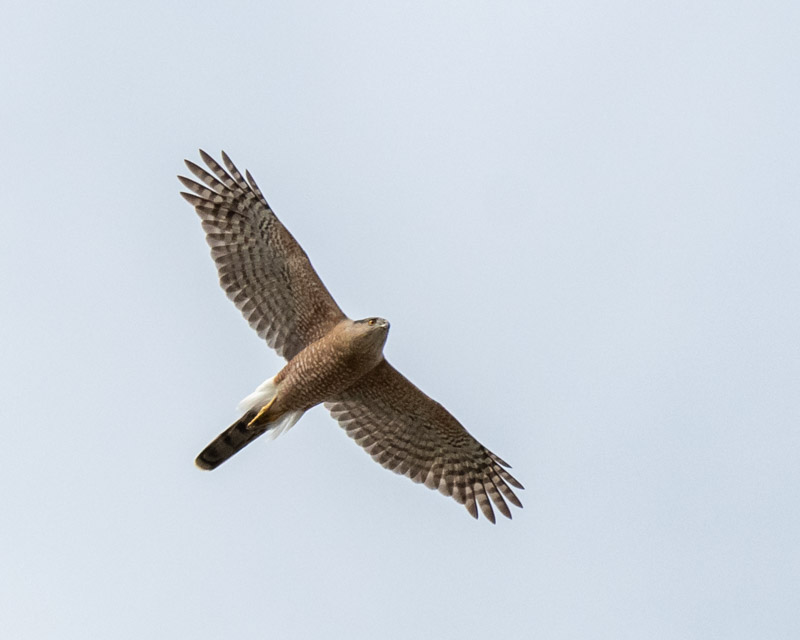
This juvenile Red-tailed hawk was seen flying over Tubac. You can ID it as a red-tailed hawk by the dark leading edge of its wing, called its “patagial mark”. Young red-tails do not yet have the tell-tale reddish tail but all red-tails have that dark patagial mark.
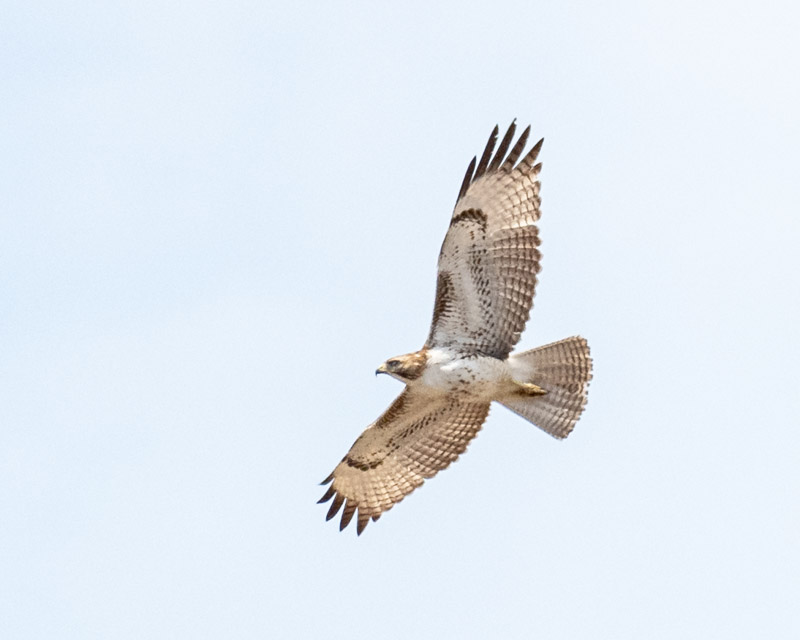
And finally, my “bird-of-the-day”: a Crested Caracara. This bird was seen near a nest in a saguaro on fenced-off city land in the Avra Valley. It was perhaps 150 yards away. Crested Caracaras are very unusual looking raptors in the falcon family, although their traits are much different than falcons. An interesting thing about the bird below is the protruding bulge you can see in his chest. This is the bird’s crop- a muscular pouch near the bird’s gullet or throat this is used to store food temporarily while the bird’s stomach is full. When there is room in the stomach, the food is moved down to be digested.
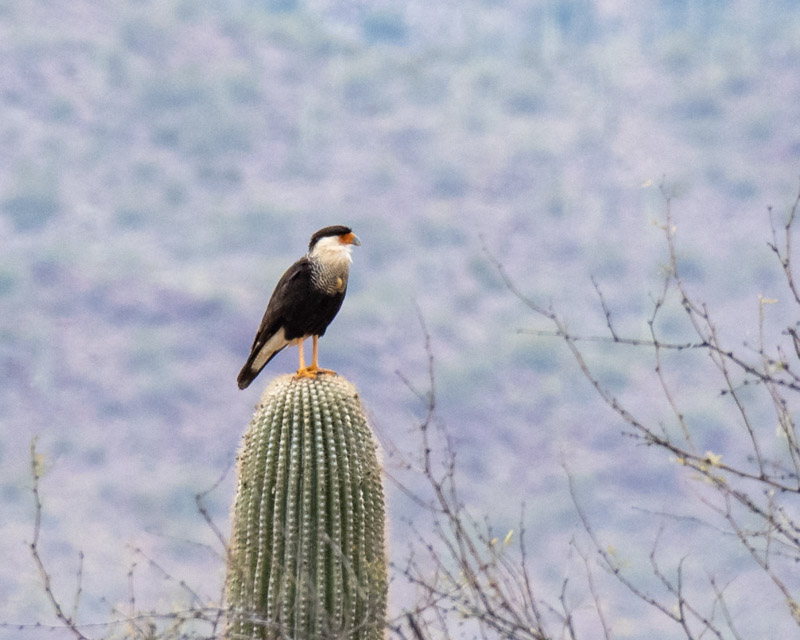
To give you some perspective, this is the full-sized photo I took with a 300 mm zoom lens and no cropping during processing. The mountains in the background are the western side of the Tucson Mountains.
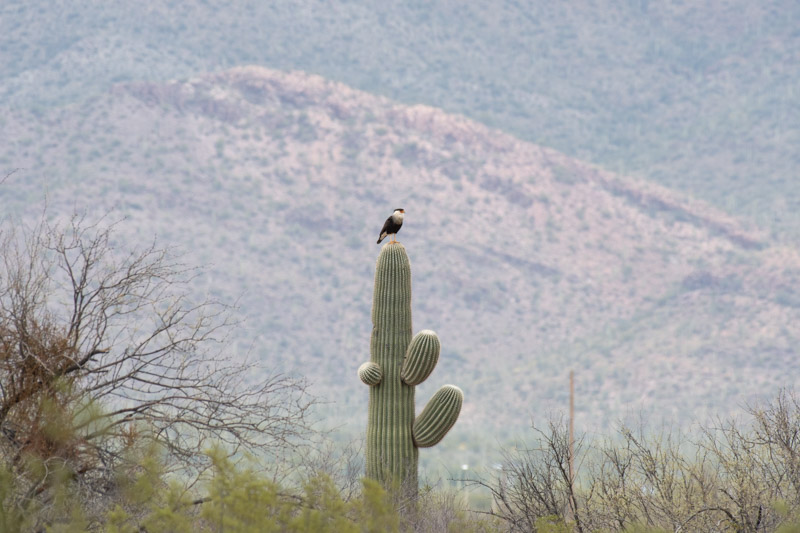
And this is the same shot as above, after some cropping and processing.
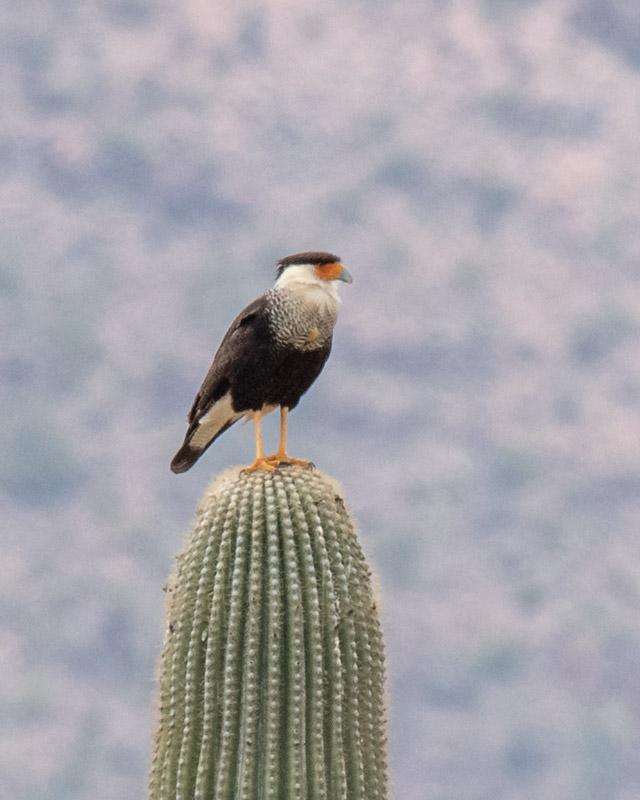
Crested Caracaras are difficult to find. We do not have them in the Foothills. Most people who see these in Arizona do so along AZ Highway 86, traveling from Tucson to Sells or Ajo. In the US, Crested Caracaras are seen most often in Southwestern Arizona and in Southern Texas and then are common south of the border and into Mexico.
